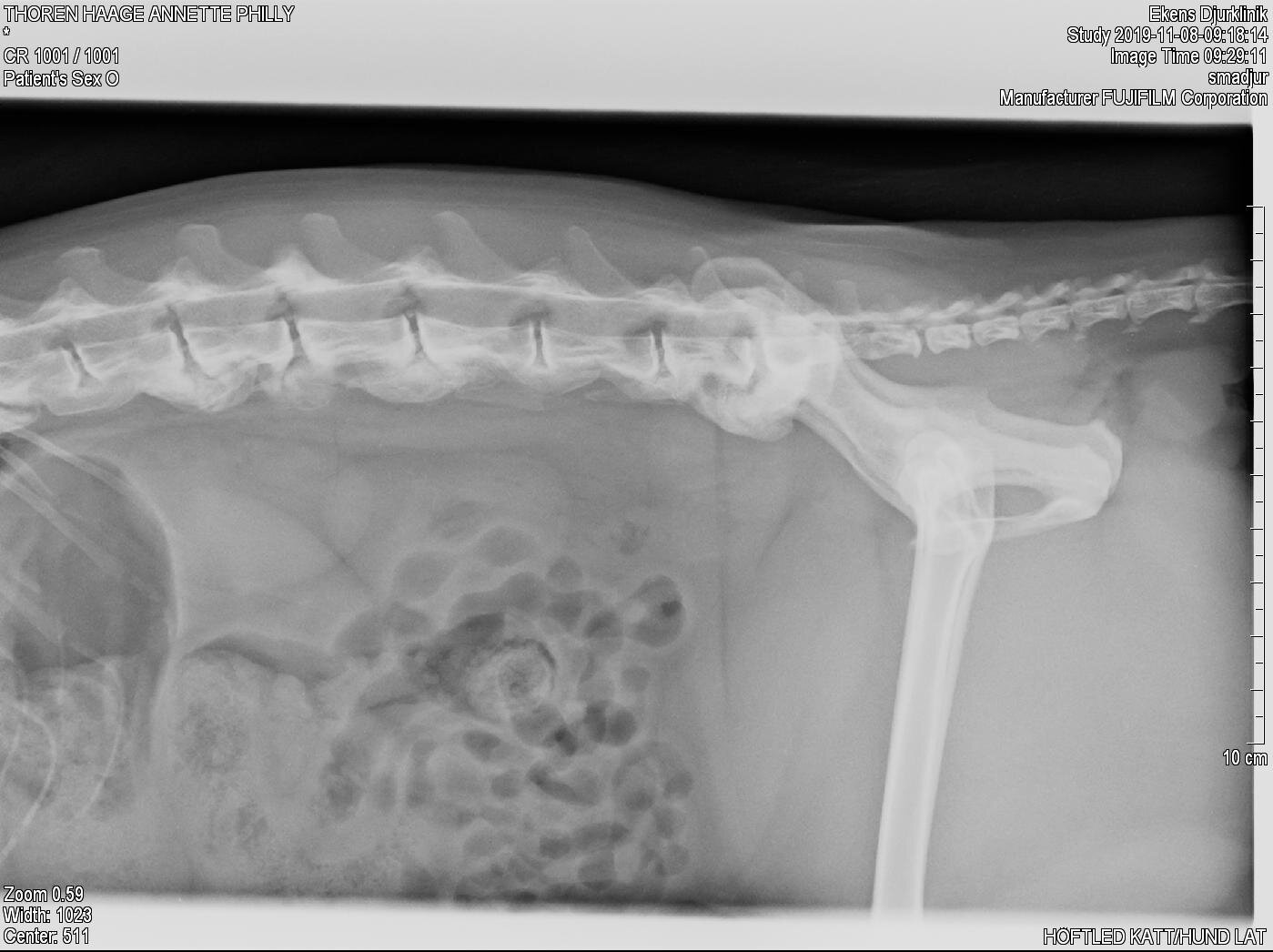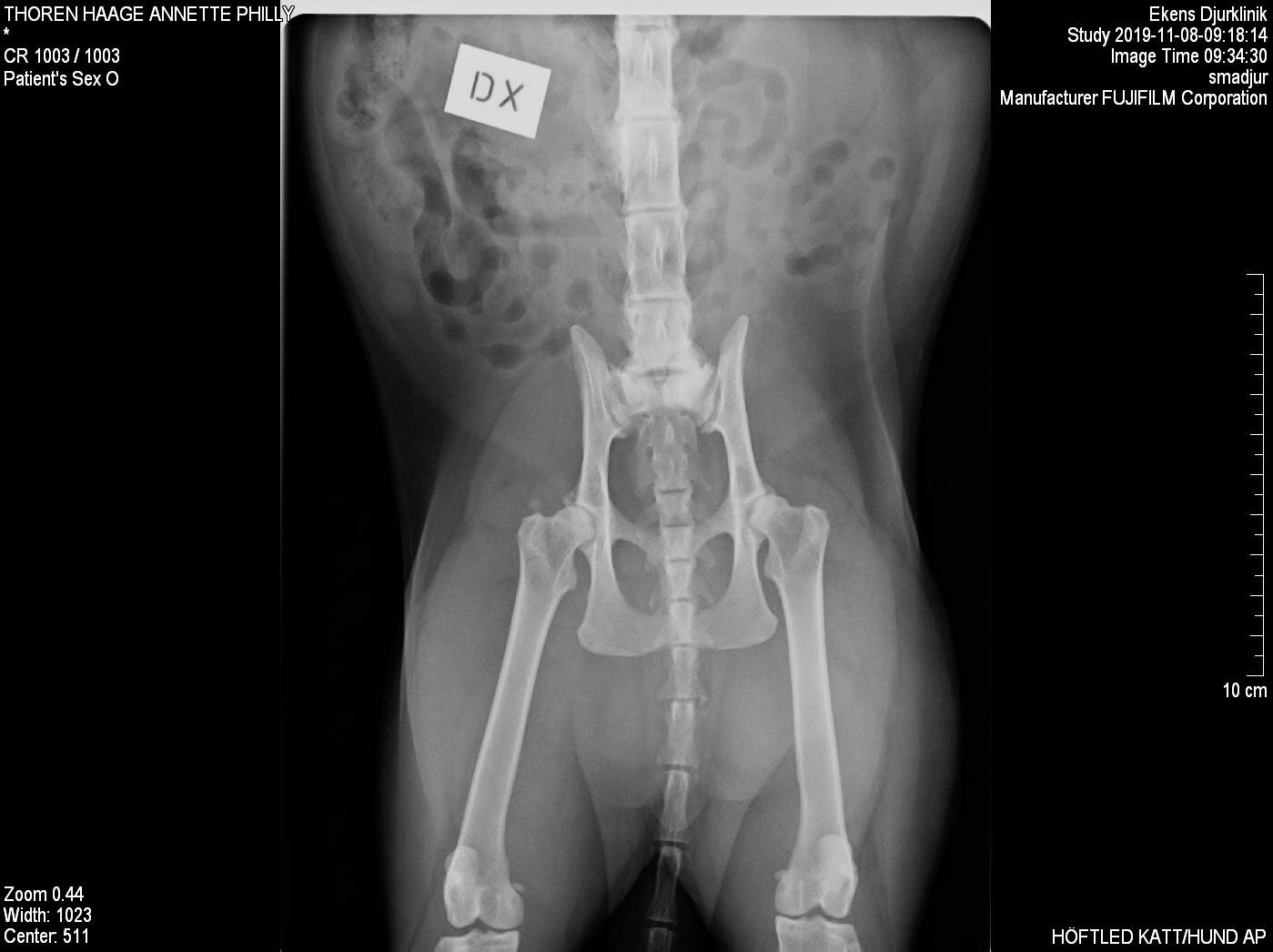Scottish Fold: It’s Time To Stop The Breeding
The Scottish Fold is a controversial cat breed, simultaneously getting banned in some countries such as Belgium while getting more and more popular on social media. In this article, I will present everything that we know about Scottish Folds and why the only possible conclusion is that the breeding of Scottish Folds must be stopped.
Scottish Fold: a bit of history and genetics
History
As its name indicates, the Scottish Fold is a cat breed that originated from Scotland and is famous for its folded ears.
The folded ears, which are unique to this breed, give the Scottish Fold cat an “owl”-like look often described as sweet. The popularity of the breed is presumably originated from this unusual look.
The first Scottish Fold was found in a barn in Scotland in 1961 and was called Susie. The breed was registered firstly in 1966 in the GCCF (the main cat pedigree registry of the UK) but was then banned in 1971 from the GCCF because of the presumed health issues related to the breed. The Scottish Fold was exported in the US and the breed developed there.
It’s important to note that the folded ear was a natural and spontaneous mutation that was then selected and bred by humans. It seems that this mutation already appeared in other parts of the world and at other times according to Messy Beast.
Genetics
Now, let’s talk about the genetics of the folded ears as it will be essential to understand the health issues related to the Scottish Fold breed. If you don’t have any knowledge of genetics, you should read this article which includes some basic concepts of cat genetics.
Scottish Fold cats have those particular ears because of a dominant gene that causes the cartilage of the ear to be weak and fold.
The dominant allele is noted Fd for “folded” and the recessive allele is fd for “non-folded” ear. This means that if the cat is Fd/Fd (homozygote) or Fd/fd (heterozygote), it will have folded ears while if it is fd/fd, it will have non-folded ears, aka straight ears.
Here are some breeding tables that will be useful for the following article:
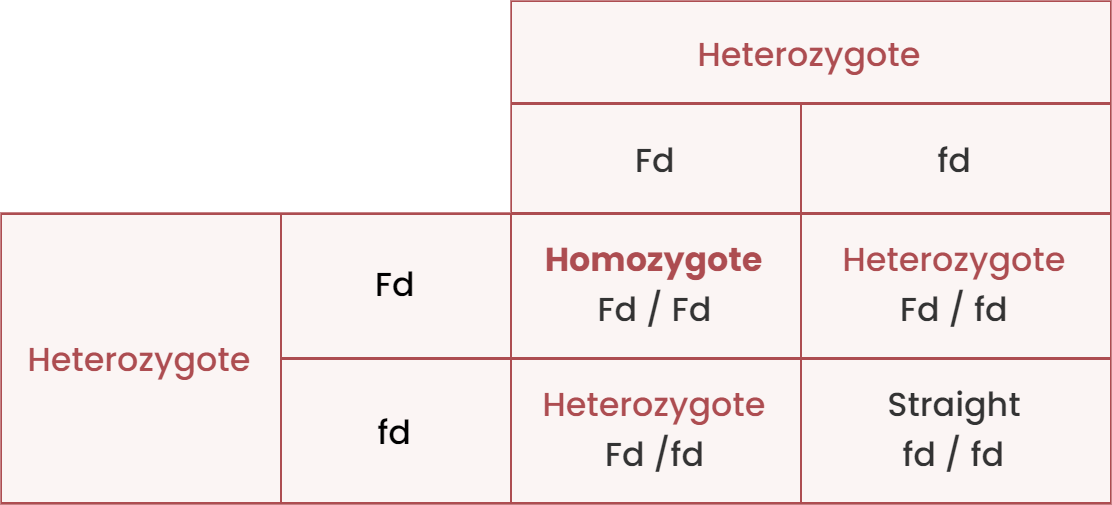
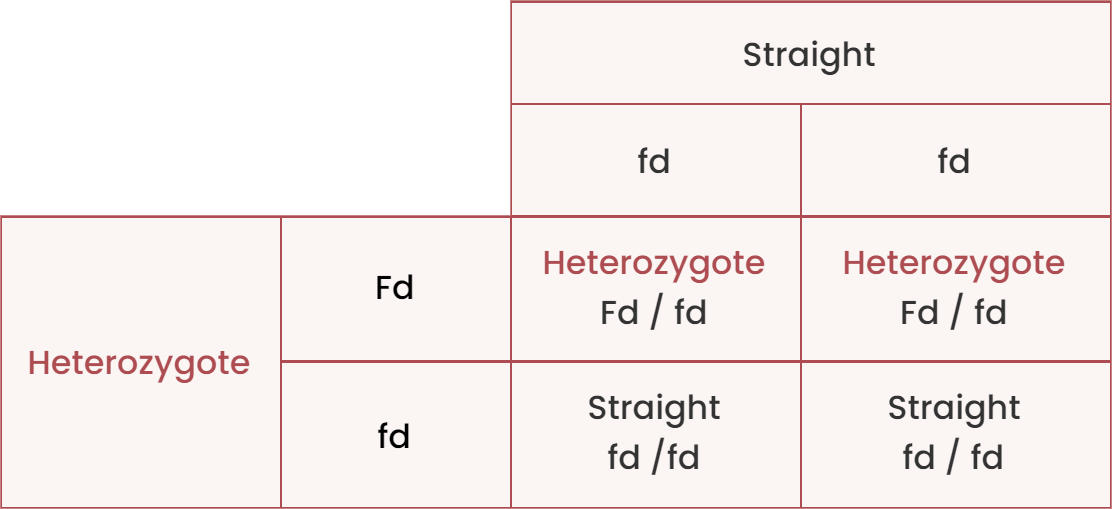
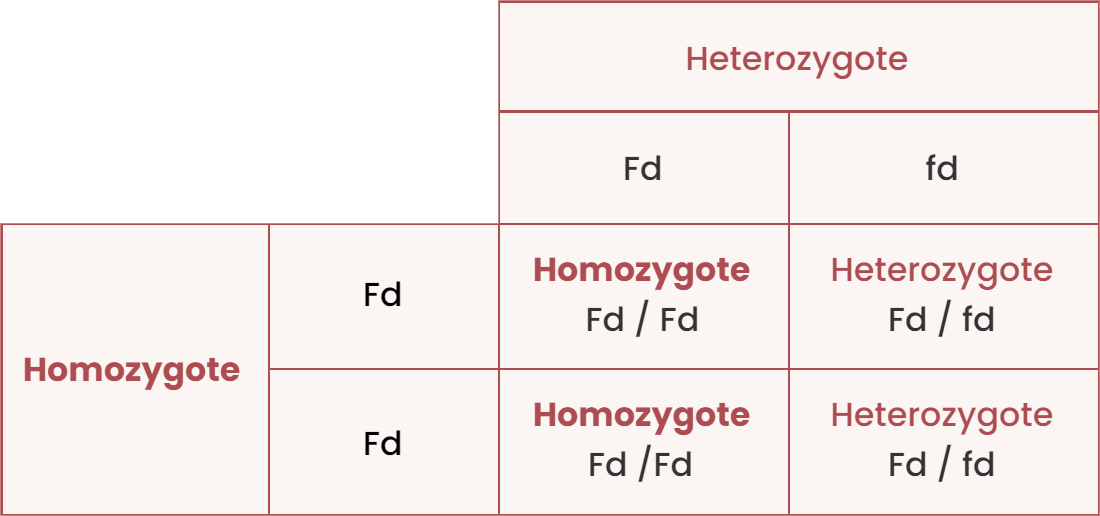
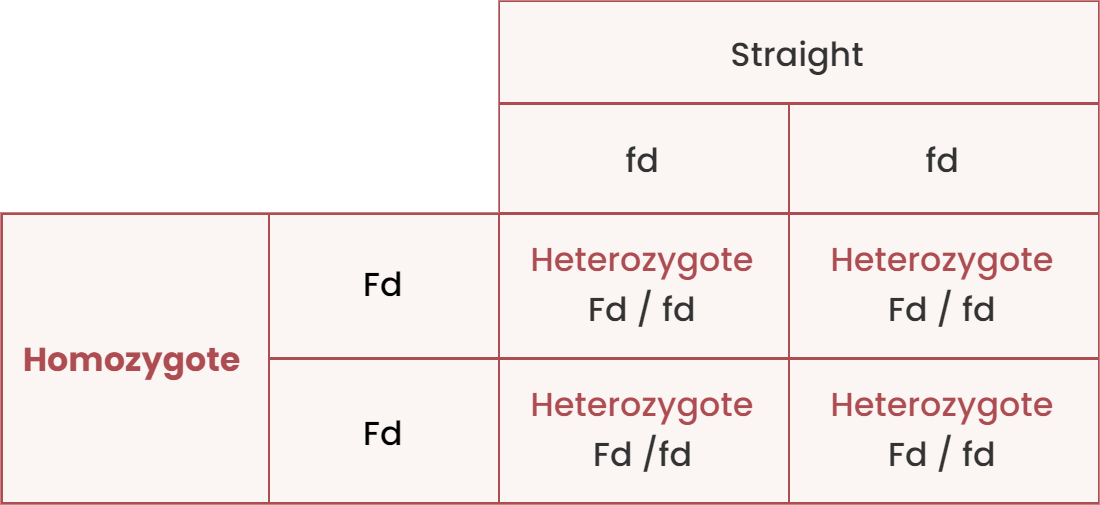

When you breed a homozygous fold, no matter if it’s with a straight-eared cat, a heterozygous or homozygous fold, all their kittens will have folded ears.
You can see that when you breed two heterozygous folds together, you have a 25% chance to get homozygous folds, a 25% chance to get straight-eared cats, and a 50% chance to get heterozygous folds.
When you breed a heterozygous fold with a straight-eared cat, you have a 50% chance to get straight-eared cats and a 50% chance to get heterozygous folds.
In many cat fancies, a straight-eared kitten born from a Scottish Fold is registered as a Scottish Straight, and this is the term that will be used in this article to designate them.
Scottish Fold/Straight with longhair are often designated as Highland Fold/Straight. Everything explained in this article applies also to Highland cats, as the only difference is their fur length.
An Highland Fold
Health issues
Now that we understand what the Scottish Folds are and where they come from let’s look at their health issues.
I mentioned that the breed was banned from the GCCF for health issues in 1971. It was then suspected that the folded ears caused deafness. However, Susie, the first Scottish Fold, was a white-dominant cat: we have seen that this color is linked to deafness in a previous article. So, the fold gene wasn’t, in fact, responsible for this health issue.
The GCCF, however, wasn’t entirely wrong: in 1972 and 1973, the first reports of skeletal deformities were made about Scottish Fold cats. Both bone abnormalities and crippling lameness were reported.[1]
In 1975, an inheritance study was made which concluded that the Fd gene was dominant and that the cats with abnormalities were only the ones born from two Fold parents. It was hypothesized that only the homozygous cats were affected.
The reported abnormalities in the study were about a short, thick, and rigid tail. The cats had short and distorted limbs, they walked abnormally, or were lame. The joint lesions progressed until the cats were entirely unable to walk. The kittens had irregular bone formation with bone outgrowth on their back limbs and the lesions could be seen from as young as 7 weeks old!
The study recommended that the breeding of the Scottish Fold should be limited and if they are bred, they should be bred only to straight-eared cats. That way, as we have previously seen in the genetic part, only heterozygous Scottish Folds would be born, and this would avoid the disease. [1]
An homozygous Scottish Fold from [24]
However, some observations were later made that concluded that heterozygous could also be affected and the lesions could appear later in life. A study was made in 1999, to evaluate those claims. In the study, five Scottish Folds developed similar abnormalities from as young as 6 months old and so severe that two of the cats had to be euthanized. When two of the remaining cats were examined again some months later, the disease had worsened.
These five Scottish Folds originated from the mating of a Scottish Fold and a straight-eared cat: they were heterozygous.
To assess how widespread the issue was, the researchers radiographically screened apparently healthy Scottish Fold from a cattery. All the Folds had signs of the disease going from mild to severe and they were also all heterozygous.
The authors of the study also mentioned that as the cats have weak cartilage in their ears, it’s not surprising that they have other anomalies linked to defective cartilage function.
In this study, two types of lesions were identified in the observed cats:
skeletal deformities from abnormal bone growth, especially on the paws. The paws of the most affected cats were thick and shortened. The tail was often affected with short and thick vertebrae.
arthritis in several of the joints of the paws, the hind limbs being often more affected.
These lesions are characteristics of a disease named osteochondrodysplasia (shortened as SFOCD, for Scottish Fold OsteoChondroDysplasia).
The study concluded that nearly all Scottish Folds have some kind of lesions. The proposed solution was to stop breeding all Scottish Folds and reduce the breed to solely the Scottish Straight. [1]
Front and back limbs of an heterozygous fold from [4]
Subsequently, many studies kept reporting cases of SFOCD in heterozygous or homozygous cats. In one notable study, 13 heterozygous Scottish Folds which were presumably healthy according to their owners all had radiographic lesions of SFOCD ranging from mild to severe.
One of the difficulties reported in several studies is that, because of a cat's ability to hide pain, owners (and even vets) are often unable to see the signs of disease. This explains why cats that appeared healthy had, in fact, radiographic lesions.
Researchers also emphasized that it was impossible to predict how severely the heterozygous cats would be affected or when the symptoms would appear. In fact, in heterozygous cats, the symptoms can appear after several years.
Finally, some authors go as far as hypothesizing that the calm character of the Scottish Fold comes from the fact that they are living in pain. [5][6][2][7][8][9][10][11][13][14][23][24]
Back limbs of an heterozygous fold from [4]
In 2008, a study showed that the Fold gene was, very likely, incompletely dominant. This means that a cat could be heterozygous (Fd/fd) but can still appear to be straight-eared. This is a serious issue as when a presumed Scottish Straight is bred with a Scottish Fold, it could, in fact, result in homozygous Scottish Fold kittens. These homozygous kittens not only will suffer from severe cases of SFOCD but will also potentially be bred as they will be presumed heterozygous.
Scottish Straight cats, in most studies, didn’t appear to have any lesions. [1][10][11]
However, there is anecdotal evidence of severe SFOCD lesions in the Scottish Straight, as found in the radiographs graciously provided by Annette Thorén Haage, an ex-breeder.
On the x-rays of this 11-year-old Scottish Straight, there is a severe bone outgrowth on the underside of the spine, as well as inside the spinal channel. A possible explanation could be that the Scottish Straight was, in fact, heterozygous due to the incomplete penetrance of the gene.
Radiographs of a 11-year-old Scottish Straight provided by Annette Thorén Haage
The good news is that in 2016, the specific gene that causes the folded-ear was isolated. It is now possible to DNA test the cats to know for sure if they are homozygous, heterozygous, or not-folded. Testing all the cats would solve the issue of the Scottish Straights being sometimes in fact heterozygous. [4]
However, the bad news is that we know that the gene that was isolated is present in other species (such as humans) and it is linked to similar disorders of the development of bone and cartilage. It was concluded that the folded-ear gene is necessarily linked to SFOCD: if a cat doesn’t have SFOCD, it doesn’t have folded ears (and, viceversa, if a cat has the folded-ear gene, it will have SFOCD).
In the most recent study on Scottish Fold cats (published in August 2021), the researchers picked several Scottish Fold cats that were selectively bred to minimize SFOCD and were apparently healthy. However, despite the cats’ apparent well-being, the researchers were still able to differentiate Scottish Fold cats from straight-eared cats based on their x-rays. The Scottish Folds all had at least mild lesions and were genetically tested heterozygote. [23]
Other anecdotal issues
While the following issues are almost negligible in comparison to the effects of SFOCD, they are still worth mentioning.
According to the data from a pet insurance company in Japan, Scottish Fold cats have an increased risk of otic disease compared to other breeds and domestic cats, which is not surprising given their ear shape. [12]
Finally, a behaviorist raised a concern about the effects of having folded ears as ears are a major sensory organ as well as a means of communication between cats. [17]
Today’s situation: the denial
The good
On one hand, more and more cat fancies (e.g. the GCCF and the Fifé), as well as countries (e.g. Belgium banned the breeding and selling of Scottish Folds), are banning the breeding of Scottish Folds.
Most (if not all) cat fancies that recognize the Scottish Fold are banning the breeding of two folded-ear cats together to avoid homozygous folds. It is also understood by cat breeders that homozygous Scottish Folds will suffer severely from SFOCD.
The bad
On the other hand, the cat fancies that recognize the breed don’t enforce health tests such as a routine x-ray of the Scottish Folds used for breeding or DNA test for the folded gene.
Additionally, despite all the case studies and the fact that not a single study has found a Scottish Fold without radiographic sign of SFOCD, breeders keep affirming that it’s possible to breed heterozygous Scottish Fold without health issues.
At the same time, breeders aren’t willing to participate in health studies about the breed. In two instances, geneticists have offered to x-ray the cats for free; however, only a few breeders have participated. [15] In one of the studies, it was noted that they expected to get 40 participants but managed to recruit only 27. [11]
The breed is increasing in popularity among pet owners in several countries such as France: this could be due to the popularity of the breed on social media or because many celebrities (such as Taylor Swift or Ed Sheeran) own these cats.
However, in a study, the Scottish Fold owners either were unaware of the disease or thought that it didn’t affect the cats which are a cross of Scottish Fold and straight-ear cats. [8] This is probably due to the belief of breeders that only the homozygous cats are affected. We have seen this is not the case, so awareness must be raised: heterozygous Scottish Folds also suffer from the disease, at least mildly.
You have a Scottish Fold: what should you do?
First, this article wasn’t written to blame you. It is here to raise awareness on the health issues that your cat very probably has or will develop.
I can only encourage you to be proactive about the health of your cat and to be on the lookout for any sign of pain or discomfort. A cat being less active or less playful is too often dismissed as getting older while it could, in fact, be a sign of underlying pain.
If your cat is hesitating to jump on the couch while it loved to do it before, if it is sleeping more than usual, if it needs to “warm-up” after waking up, those are all signs of pain.
Don’t miss any wellness check with your vet and request an x-ray or any complementary exam in case of doubt.
You should also be especially careful that your cat stays in shape as any extra weight will need to be carried by the already fragile joints and could worsen the disease.
Finally, while osteochondrodysplasia can’t be cured, some palliative care exists and can help improve the quality of life of your cat. The treatments mentioned in the studies are:
Radiation therapy [13][21]
Laser therapy [14]
Surgery for the most extreme cases to remove the bone outgrowth [8]
Dietary supplements, in particular chondroprotective supplements, can also be used: glucosamine, chondroitin sulfate, and omega-3 all favor the health of joints and cartilage. [2]
What can you do?
If you don’t have a Scottish Fold but you would like to help, the best thing that you can do is to raise awareness. Share this article on social media, contact your local cat fancy or legislator. In fact, it may be against your country’s welfare law to deliberately breed cats with disabilities.
But please don’t blame the Scottish Fold owners: they are the ones who need to deal with their beloved pets that are in pain and need extra care. The majority of them didn’t know or didn’t realize the extent of the issue.
To conclude, all Scottish Fold cats are affected by osteochondrodysplasia and this disorder can’t be dissociated from the breed. Breeding a Scottish Fold without osteochondrodysplasia would be breeding a Scottish Straight.
For a long time, I thought that the Scottish Fold was a controversial breed. This is, however, not the case, as all the studies are unanimous: it’s time to stop the breeding of the Scottish Fold.
Maybe, in the future, new studies like the one the LOOF (the French cat fancy) is currently doing will give another point of view on the breed. [20]
If that’s the case, I will make sure to update this article. However, at the moment, there is no ambiguity: keeping to breed Scottish Fold is to be considered animal cruelty.
Sources
[1] Malik R, Allan GS, Howlett CR, Thompson DE, James G, McWhirter C, Kendall K. Osteochondrodysplasia in Scottish Fold cats. Aust Vet J. 1999 Feb;77(2):85-92.
[2] Chang J, Jung J, Oh S, Lee S, Kim G, Kim H, Kweon O, Yoon J, Choi M. Osteochondrodysplasia in three Scottish Fold cats. J Vet Sci. 2007 Sep;8(3):307-9.
[3] Takanosu M, Takanosu T, Suzuki H, Suzuki K. Incomplete dominant osteochondrodysplasia in heterozygous Scottish Fold cats. J Small Anim Pract.
[4] Gandolfi B, Alamri S, Darby WG, Adhikari B, Lattimer JC, Malik R, Wade CM, Lyons LA, Cheng J, Bateman JF, McIntyre P, Lamandé SR, Haase B. A dominant TRPV4 variant underlies osteochondrodysplasia in Scottish fold cats. Osteoarthritis Cartilage. 2016 Aug;24(8):1441-50.
[5] Takanosu M, Hattori Y. Osteochondrodysplasia in Scottish Fold cross-breed cats. J Vet Med Sci. 2020 Dec 26;82(12):1769-1772.
[6] Zlateva, Nadya & Marinov, Georgi. (2017). OSTEOCHONDRODYSPLASIA IN SCOTTISH FOLD CATS CASE REPORT. 2. 21-24.
[7] Turan, Gulcan & Bozkan, Zeynep. (2019). Osteochondrodysplasia in a 9-Year-Old Scottish Fold Cat. VCOT Open. 02. e60-e63.
[8] Aydin, D., Altunatmaz, K., Erdikmen, D.O., Özer, K., Durmus, D., & Avanus, K. (2015). Hereditary osteochondrodysplasia in Scottish Fold cats. Kafkas Universitesi Veteriner Fakultesi Dergisi, 21, 463-469.
[9] Computed tomographic features of Scottish Fold osteochondrodysplasia. Korean J Vet Res. 2020;60(1):43-47.Published online March 2, 2020
[10] Étude radiographique des caractères fold et straight chez les chats Scottish et British Candice BELLEGARDE. 2012. École Nationale Vétérinaire d’Alfort.
[11] Contribution à l’étude du phénotype chez le Scottish Fold. Virginie BERNEZ. 2003. École Nationale Vétérinaire d’Alfort.
[12] Inoue M, Hasegawa A, Sugiura K. Morbidity pattern by age, sex and breed in insured cats in Japan (2008-2013). J Feline Med Surg. 2016 Dec;18(12):1013-1022.
[13] Selting KA, Lattimer JC, Hause W, Megan G. Osteochondrodysplasia in a Scottish Fold Cat Treated with Radiation Therapy and Samarium-153-1,4,7,10-Tetraazacyclododecane-1,4,7,10-Tetramethylene-Phosphonic Acid. J Am Anim Hosp Assoc. 2019 May/Jun;55(3):e55304.
[14] Case report from ASA Veterinary
[17] ”Minutes of the World Cat Congress Annual Meeting: Cambridge, United Kingdom, 19-20 May 2013”
[18] Breeding Registration Rules FIFe
[19] PV de la réunion du Conseil Scientifique du LOOF I –Du nouveau concernant la génétique
[20] Travaillons ensemble à la pérennité de la race Scottish/Highland Fold - LOOF communications aux éleveurs
[21] Hubler, M., Volkert, M., Kaser-Hotz, B. and Arnold, S. (2004), PALLIATIVE IRRADIATION OF SCOTTISH FOLD OSTEOCHONDRODYSPLASIA. Veterinary Radiology & Ultrasound, 45: 582-585.[22] Advice of the Brussels Animal Welfare Council (21/06/2018) Concerning a ban on the breeding of Fold cats
[23] Rorden, C., Griswold, M.C., Moses, N. et al. Radiographical Survey of Osteochondrodysplasia in Scottish Fold Cats caused by the TRPV4 gene variant. Hum Genet (2021).
[24] Fujiwara-Igarashi, A., Igarashi, H., Hasegawa, D., & Fujita, M. (2015). Efficacy and Complications of Palliative Irradiation in Three Scottish Fold Cats with Osteochondrodysplasia. Journal of veterinary internal medicine, 29(6), 1643–1647.

![An homozygous Scottish Fold from [24]](https://images.squarespace-cdn.com/content/v1/5e8a2944d7ce562e250eb009/1629903499948-5I6CDR9JH8R34SB89FIT/jvim13614-fig-0002-m.jpg)


